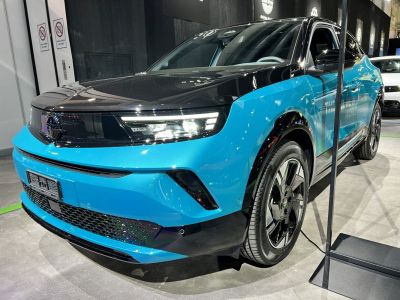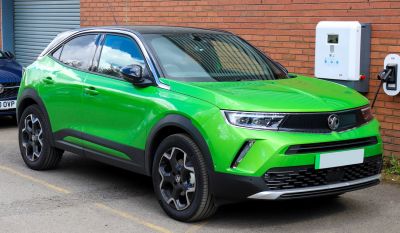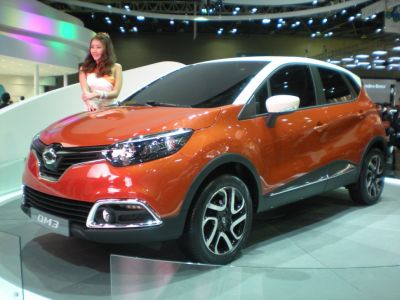 2017 Hyundai Kona I Dimensions, Size & Specs
2017 Hyundai Kona I Dimensions, Size & SpecsMeasurements of the 2017 Hyundai Kona I, engineered for optimal performance and comfort
| Dimensions | |
|---|---|
| Length: | 4165-4180 mm164.0-164.6 in13.7-13.7 ft |
| Width: | 1801 mm70.9 in5.9 ft |
| Width (Opened Mirrors): | 2070 mm81.5 in6.8 ft |
| Height: | 1570 mm61.8 in5.2 ft |
| Ground Clearance: | 158-177 mm6.2-7.0 in0.5-0.6 ft |
| Trunk Capacity: | 332-544 liter11.7-19.2 cu ft |
| Trunk Capacity (Max): | 1114-1297 liter39.3-45.8 cu ft |
| Weight Specifications | |
| Curb Weight: | 1233-1685 kg2718-3715 lbs |
| Maximal permitted Weight: | 1805-2170 kg3979-4784 lbs |
| Roof Load: | 80 kg176 lbs |
| Tire Specifications | |
| Rims Sizes: | 16-inch rims:
|
| Tire Sizes: |
|
The Hyundai Kona I, produced from 2017 to 2020, is a compact SUV designed for urban and versatile driving. It features a length ranging from 4165 to 4180 mm (163.9 to 164.6 inches), making it a practical option in tight city spaces while providing a roomy interior. The vehicle width measures between 1800 and 1801 mm (70.9 to 70.9 inches) with mirrors folded, expanding to 2070 mm (81.5 inches) when mirrors are opened. Its height varies between 1565 and 1570 mm (61.6 to 61.8 inches), providing a commanding yet sleek stance on the road.
Weight specifications reflect the vehicle's adaptability, with curb weight ranging from 1233 to 1685 kg (2719 to 3715 lbs) depending on the trim and equipment levels. The maximum permissible weight spans from 1805 to 2170 kg (3979 to 4785 lbs), supporting a robust carrying capacity.
Luggage space is one of the Kona I's highlights, offering between 332 and 544 liters (11.7 to 19.2 cubic feet) of cargo capacity with rear seats upright, expanding significantly to between 1114 and 1297 liters (39.3 to 45.8 cubic feet) when rear seats are folded. This flexibility suits various lifestyle needs from daily commuting to longer trips.
Ground clearance ranges from 158 to 177 mm (6.2 to 7.0 inches), striking a balance between urban maneuverability and capability on rough or uneven terrains. The roof load limit of 80 kg (176 lbs) allows additional cargo solutions such as roof boxes or carriers.
The Kona I rides on a variety of rim sizes including 16, 17, and 18 inches with tire sizes varying from 205/60 R16 to 225/45 R18. These configurations contribute to stable handling, comfort, and sporty aesthetics. Overall, this generation of Hyundai Kona combines compact dimensions with practical features, ideal for drivers seeking a versatile SUV with efficient use of space and decent off-road potential.
Discover the standout features that make the 2017 Hyundai Kona I a leader in its class
Have a question? Please check our knowledgebase first.
The Hyundai Kona I, produced from 2017 to 2020, has a length ranging between 4165 mm to 4180 mm (approximately 164 to 164.6 inches). Its width spans from 1800 mm to 1801 mm (about 70.9 to 70.9 inches), with the width increasing to 2070 mm or around 81.5 inches when side mirrors are opened. The vehicle's height varies between 1565 mm and 1570 mm (roughly 61.6 to 61.8 inches). These compact dimensions help position the Kona I as a practical and maneuverable subcompact SUV, suitable for urban environments and tight parking spaces while maintaining a confident road presence.
The Hyundai Kona I's curb weight ranges from 1233 kg to 1685 kg (2719 to 3715 lbs), depending on engine choice, drivetrain (front-wheel or all-wheel drive), and trim level. The maximum permissible weight of the vehicle— which includes the weight of passengers, cargo, and fluids— spans between 1805 kg and 2170 kg (3979 to 4784 lbs). This variation allows the Kona I to accommodate different driving needs, from light, efficient urban travel to slightly heavier loads when equipped with additional features or all-wheel drive capability, making it versatile within the subcompact SUV segment.
The Hyundai Kona I boasts a ground clearance ranging from 158 mm to 177 mm (6.2 to 7.0 inches). This clearance provides an ideal balance for a subcompact SUV, allowing drivers to confidently manage minor off-road conditions such as gravel roads, uneven surfaces, and city curbs without compromising on-road handling stability. The moderately raised ride height also enhances visibility over traffic, improving driver awareness and overall safety in varied driving environments.
While the Hyundai Kona I has a width of about 1800 mm to 1801 mm (approximately 70.9 inches) with mirrors folded, this width expands to 2070 mm (about 81.5 inches) when the side mirrors are opened. This increase of 270 mm (10.6 inches) is important to consider in tight parking situations, narrow city streets, or garages. Drivers must be cautious when navigating restricted spaces to avoid mirror damage or collisions. The mirror width also highlights the need for attentive spatial awareness when parking or maneuvering in confined environments.
The Hyundai Kona I offers a practical luggage capacity starting at 332 liters (11.7 cubic feet) in the standard configuration. When the rear seats are folded down, cargo capacity expands significantly, ranging from 1114 liters to 1297 liters (approximately 39.3 to 45.8 cubic feet). This flexible loading space makes the Kona I well-suited for daily errands, weekend trips, or transporting bulky items. The generous expansion ability gives owners versatility, making the vehicle competitive within the subcompact SUV class for cargo practicality.
The Hyundai Kona I comes equipped with various rim sizes including 16, 17, and 18 inches (with rim widths of 6.5J to 7.5J). Corresponding tire sizes include 205/60 R16, 215/55 R17, 235/45 R18, and 225/45 R18. Larger rims with lower-profile tires (like 18-inch rims) generally offer a sportier appearance and improved cornering response, but may slightly reduce ride comfort due to stiffer sidewalls. On the other hand, smaller rims and higher-profile tires enhance cushioning over rough surfaces but can reduce sharp handling. This range allows buyers to choose between comfort and sporty driving preferences.
Yes, the Hyundai Kona I fits comfortably into most standard residential garages in many regions. Typical residential garage widths range from 2400 mm to 3000 mm (94.5 to 118 inches), and the Kona I's width with mirrors folded is about 1800 mm to 1801 mm (around 70.9 inches). Even when mirrors are unfolded (2070 mm or 81.5 inches), most garages provide enough clearance on each side, though drivers should still be cautious. Its length of approximately 4165-4180 mm (164-164.6 inches) also fits well inside standard garage depths, ensuring ease of indoor parking without risking damage.
The Hyundai Kona I marked the introduction of the Kona nameplate, so it doesn't have a direct predecessor under the Kona name. However, compared to Hyundai's previous subcompact crossovers or hatchbacks like the Hyundai ix20 or i20 Active, the Kona I is generally larger, offering greater length, width, and height to meet SUV styling and functionality demands. It introduced a more rugged and modern design coupled with improved ground clearance and versatile cargo space, positioning itself as a new entry in Hyundai’s lineup distinctly sized to satisfy growing demand for compact SUVs.
In comparison to rival subcompact SUVs from the 2017-2020 period— such as the Nissan Juke, Honda HR-V, Mazda CX-3, and Ford EcoSport— the Hyundai Kona I falls comfortably within the standard size range for its class. Its length of approximately 4165-4180 mm (164-164.6 inches) and width of around 1800 mm (70.9 inches) offer a more modern and balanced footprint. While some rivals may be marginally longer or taller, the Kona's design delivers competitive interior space and cargo capacity, making it an attractive option for buyers interested in a versatile, compact SUV with contemporary styling.
The Hyundai Kona I attracted attention in the subcompact SUV segment thanks to its bold styling featuring a distinctive split-headlight design and aggressive front grille. It also offered modern amenities such as touchscreen infotainment, advanced safety technology, and a comfortable interior with quality materials. Utility-wise, the vehicle provided flexible cargo solutions with rear seats folding flat to maximize space, respectable ground clearance for light off-road capability, and efficient powertrains balanced with performance. These attributes positioned the Kona I as a popular choice among urban drivers seeking both style and practicality.
Discover similar sized cars.

| Production: | 2025-present |
|---|---|
| Model Year: | 2025 |
| Length: | 4150 mm163.4 in |
| Width: | 1987 mm78.2 in |
| Height: | 1506-1535 mm59.3-60.4 in |

| Production: | 2020-2024 |
|---|---|
| Model Year: | 2021 |
| Length: | 4151 mm163.4 in |
| Width: | 1987 mm78.2 in |
| Height: | 1534 mm60.4 in |

| Production: | 2024-present |
|---|---|
| Model Year: | 2025 |
| Length: | 4150 mm163.4 in |
| Width: | 1987 mm78.2 in |
| Height: | 1534 mm60.4 in |

| Production: | 2020-2024 |
|---|---|
| Model Year: | 2021 |
| Length: | 4151 mm163.4 in |
| Width: | 1987 mm78.2 in |
| Height: | 1531 mm60.3 in |

| Model Year: | 2023 |
|---|---|
| Length: | 4171-4178 mm164.2-164.5 in |
| Width: | 1981 mm78.0 in |
| Height: | 1523-1536 mm60.0-60.5 in |

| Production: | 2024-present |
|---|---|
| Model Year: | 2025 |
| Length: | 4140 mm163.0 in |
| Width: | 1800 mm70.9 in |
| Height: | 1570 mm61.8 in |

| Production: | 2013-present |
|---|---|
| Model Year: | 2013 |
| Length: | 4125 mm162.4 in |
| Width: | 1780 mm70.1 in |
| Height: | 1565 mm61.6 in |

| Production: | 2021-2025 |
|---|---|
| Model Year: | 2021 |
| Length: | 4153 mm163.5 in |
| Width: | 1942 mm76.5 in |
| Height: | 1537-1552 mm60.5-61.1 in |
